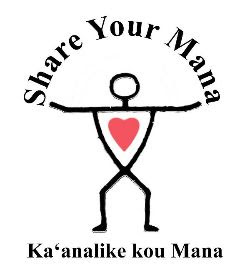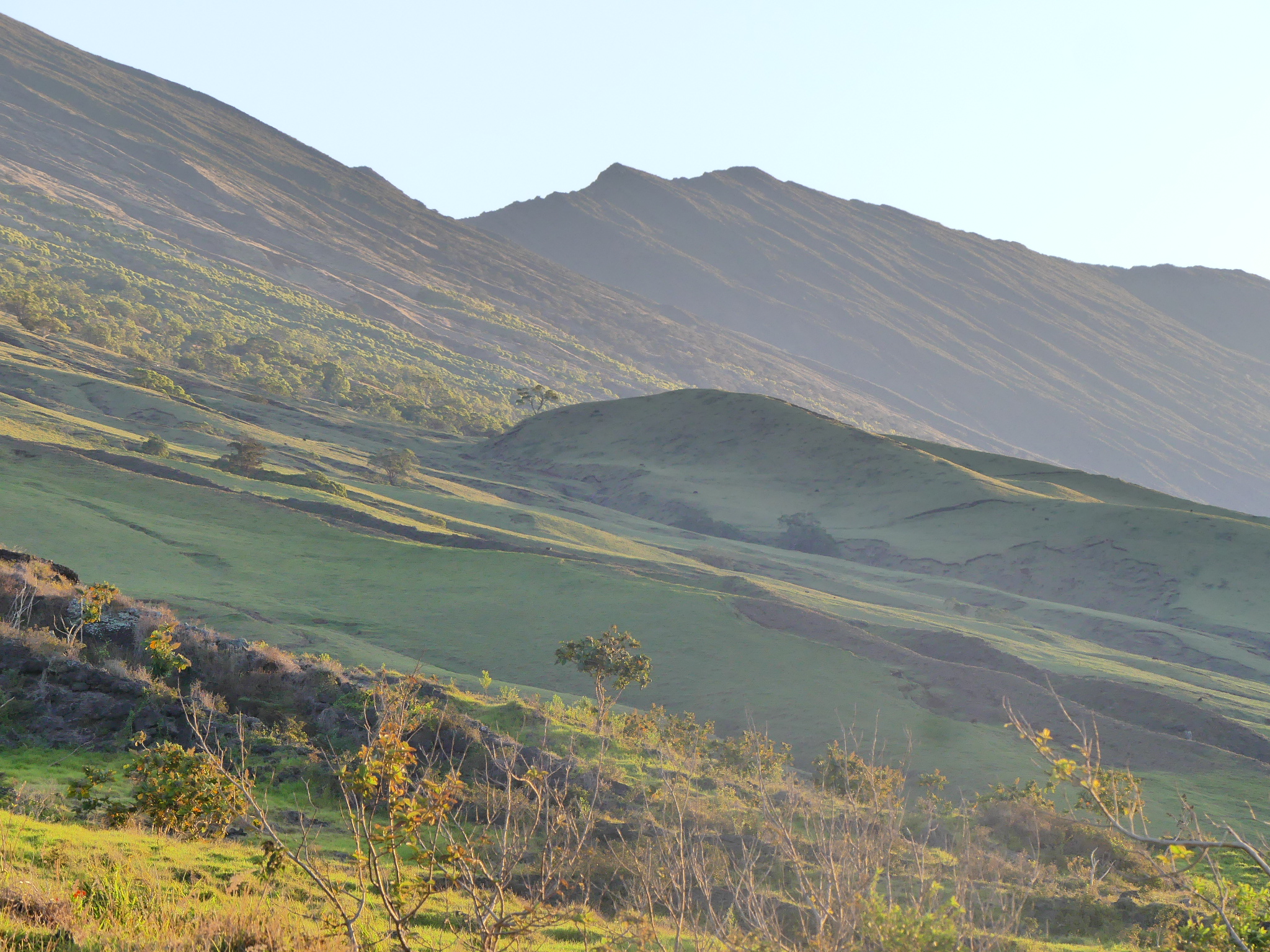
December 2017 Newsletter
Letter From the Chair
Aloha Sustainable Agriculture Committee (SAC) members!
2018 will be a good year for sustainable agriculture throughout Hawai‘i Nei. I feel a sense of urgency to produce more food for our island community. Integrated agroforestry systems add resiliency and stability to our food and fiber production systems. Watershed communities are fighting to get public trust water resources back in their streams to not only promote agriculture and aquaculture, but to also restore the ecological integrity of their streams, rivers, estuaries and nearshore public trust fisheries. We must all ask ourselves, “How important is food security and food sovereignty?”
The linear thinkers believe we should just continue to import about 90% of our food from California. But as Dr. Kioni Dudley pointed out in a recent letter to the editor, California the fastest growing state in USA, will soon not be exporting food to Hawai‘i but eating it themselves; therefore we need to “strive towards food security and self-sufficiency” just as the Hawai‘i State Constitution directs us to (Art. XI, Section 3 and 7).
Although none of us has all the answers, together we do, so we must remain vigilant in promoting sustainable agriculture, in educating ourselves and others, and in crafting good agricultural legislation that will steer our canoe rapidly towards food security and self-sufficiency.
Aloha no e malama pono,
Don “Lalakea” Heacock, Chair SAC
“The Sustainability Revolution” by A.R. Edwards
“It is happening first at the periphery of power and wealth, where revolutions often start. The “it” is often called “sustainability”, an indefinite term. But by whatever name, this revolution is more sweeping by far than that which we associate with the Enlightenment of the 18th century. The sustainability revolution is nothing less than a rethinking and remaking of our role in the natural world. It is a recalibration of human intentions to coincide with the way the biophysical world works. It is a slowing down to the rhythms of our bodies, convivial association and nature. The concern for our longevity as a species represents a maturing of our kind to consider ourselves first as “plain members and citizens” of an ecological community, a watershed community, and second as trustees of all that is past with all that is yet to come—a mystic chain of gratitude, obligation, compassion and hope.”
– David Orr, preface to the book,
Educational Materials for Hawai‘i Ag Farm Fairs
Educational materials are available for your island specific Ag Farm and County Fair Information Booths. The Sustainable Agriculture Committee can help with logistics in attaining booth space and help coordinate volunteers. Please email the name and date of your fair or event and a chapter contact person. Education is one of the important goals of this committee and we look to support you. Pictured here is a two-sided panel piece example.
Education panel example below is available for high resolution printing on facebook group page: Sustainable Agriculture Committee


Educational materials that have been designed to date are available for viewing and download at the facebook page: Sustainable Agriculture Committee. Materials featuring your chapter work can be incorporated into the poster board templates. Please email your farm stories, photos and photo captions to faith@farmersvoicehawaii.com
A Brief Chronology of Agricultural Terms: from biodynamic farming to sustainable agriculture
Agriculture first developed along the Nile and Euphrates River valleys (the “Fertile Crescent” in the Middle East) about 8,000-10,000 years ago.
Greeks referred to “susinere agronomos” (sustainable agriculture) over 2,000 years ago; “susinere” means sustainable or permanent.
Indigenous peoples primarily in tropics/subtropics/Mediterranean developed sustainable agriculture systems that were maintained for hundreds or thousands of years:
- Mayan “Chinampa” integrated aquaculture-agriculture system
- Inca “Waru- Waru” system; similar to that of Mayan system.
- Fijian “2-story” agroforestry system
- Hawaiian “Ahupua’a integrated aquaculture (fish)- agriculture (taro) watershed agroforestry system which included adjacent coral reefs
H. King. 1911. Farmer’s of Forty Centuries: organic farming in China, Korea and Japan; gives detailed description of organic and sustainable agriculture methods used throughout Asia; now often referred to as “Korean Natural Farming”.
Rudolf Steiner. 1924. Started the Biodynamic Farming movement that focused on: 1) sound farming and gardening techniques using organic methods, 2) the importance of biodiversity, and 3) the negative effects of chemical fertilizers
Smith, R. 1929. Tree Crops: a permanent agriculture; believed that farming practices and crops chosen should fit the land, not force the land to produce whatever we chose.
Sir Albert Howard. 1943. An Agricultural Testament; described sustainable agriculture as the integration of plants and animals, recycling of organic nutrients, using only organic methods.
Faulkner, E. 1943. Plowman’s Folly; described in forceful terms the biological and human tragedy resulting from misguided technology that caused the 1930’s “Dust Bowl”. He was very critical of the contemporary agriculture which was moving towards the “Green Revolution”; he was a farmer and an agricultural extension agent.
Lady Eve Balfour. 1946. The Living Soil; she promoted “sustainable agriculture” using only organic methods, and she realized that sustainable agriculture also included aquaculture, ethical trade, food processing, forest/watershed protection, horticulture and overall aesthetics of the farm; she founded the “Soil Association in the U.K.”
Rodale, J.I. 1945. Pay Dirt; book became a rallying point that carried the organic farming movement through the 1960’s.
Walters, C. Jr. 1975. The case for Eco-agriculture. Acres, USA; first reference to ecological agriculture.
Mollison, B.C. 1978. Permaculture One. Founder of permaculture movement which echoes the definition of sustainable agriculture; he is considered the father of permaculture, portmanteau of permaculture and agriculture, first described by the Greeks and later by Smith in 1926. He taught hundreds of people throughout the world how to farm sustainable.
Rodale, R. 1978. Coined the phrase “Regenerative Agriculture”, but in his 1990 paper, “Sustainable Agriculture: an opportunity for leadership”, he admitted that regenerative agriculture is only a component of the larger sustainable agriculture. (compare to Michael Young 1992 below).
Sampson, R. N. 1981. Farmland or Wasteland: a time to choose. Articulated a “national sustainable agriculture paradigm”.
Altieri, M. 1987. Agroecology: the Science of Sustainable Agriculture; best known for starting the “agroecology movement”.
Dover and Talbot. 1987. To feed the Earth: agroecology for sustainable development. Looked at the farm as an ecosystem (agroecosystem) and natural farming using nature’s model.
Berry, W. 1988. Unsettling of America. Describes the social and cultural tragedy of the mass loss of family farms in the USA, and was keenly aware that “industrial farming” was not sustainable and an alternative agriculture was essential.
USDA 1990 Farm Bill and U.S. Code: 7, Section 3103 (Public Law 113-185), line (19):
The term “sustainable agriculture” means an integrated system of plant and animal production practices having a site-specific application that will, over the long-term—
- (A) satisfy human food and fiber needs;
- (B) enhance environmental quality and the natural resource base upon which the agriculture economy depends;
- (C) make the most efficient use of nonrenewable resources and on-farm resources and integrate, where appropriate, natural biological cycles and controls;
- (D) sustain the economic viability of farm operations; and
- (E) enhance the quality of life for farmers and society as a whole.
Young, M. 1992. United Nations Educational, Scientific and Cultural Organization (UNESCO). Sustainable natural resource use: ecological integrity, economic efficiency and social/cultural equity. Young explains that sustainability, in either agriculture, forestry or fisheries development, requires three criteria to be met:
- Ecological integrity must be protected or restored; this includes biodiversity, ecological form and function, with the farm functioning as part of the ecosystem having net positive effects;
- Economic efficiency where the farm must be profitable but also have no externalities or spillover costs (e.g., pollution); this requires new “ecological economic accounting” and abandoning the old neoclassical accounting that contained externalities
- Social and cultural equity where farm products are affordable and available to all sectors of society, not just the rich.





You must be logged in to post a comment.